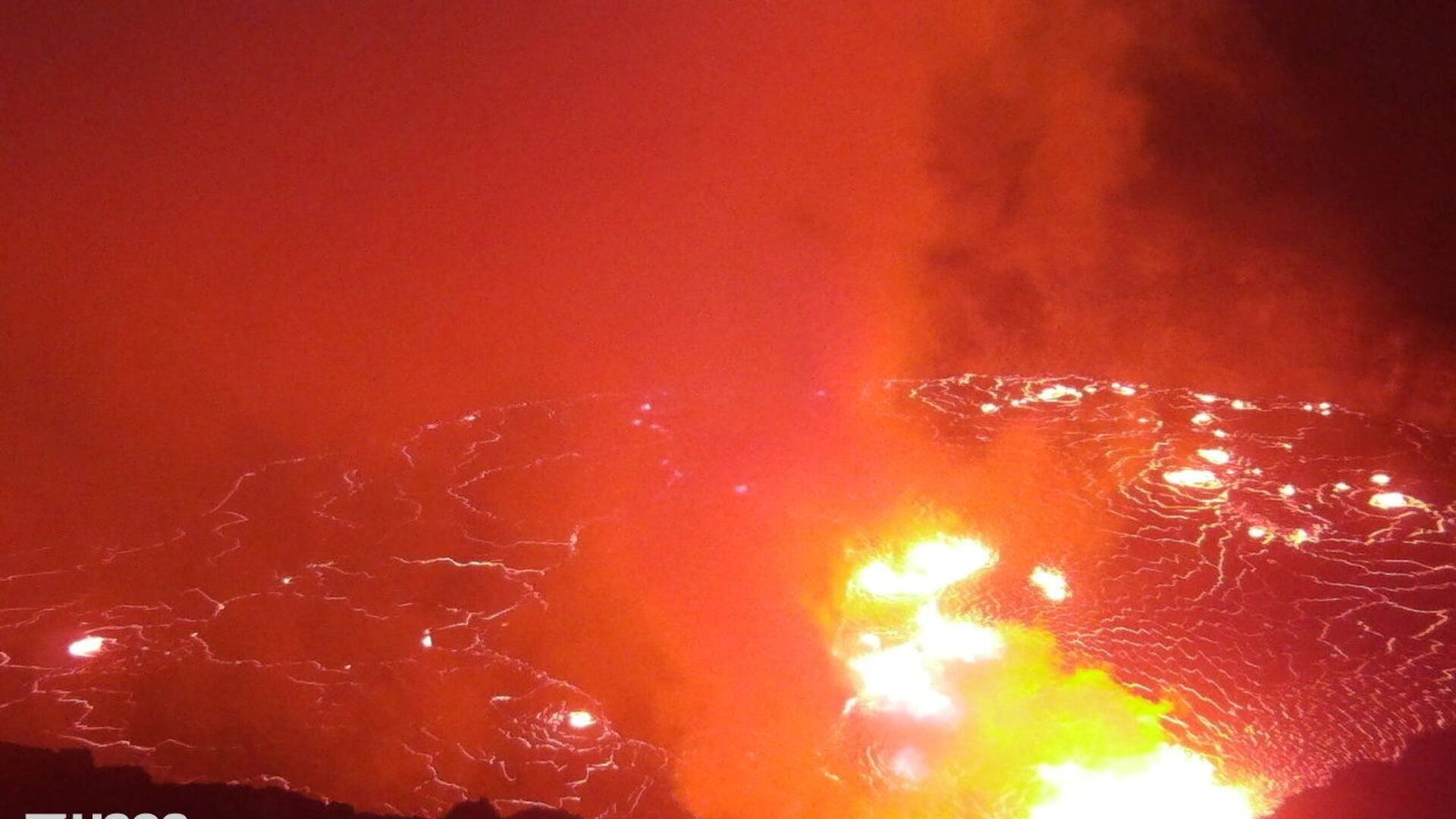Fight Eruption…With Explosives? Official Suggests Dropping Bomb on Raging Canary Island Volcano

© REUTERS / USGS
Subscribe
It has been six weeks since the Cumbre Vieja volcano began spewing rivers of lava, and it seems the eruption is showing no sign of abating. Lava flows have destroyed over 900 hectares of land and over 2,000 buildings. Around 7,000 people have been evacuated from the area.
A Spanish official has suggested an unusual way to deal with the raging Cumbre Vieja volcano on the Canary Islands. Casimiro Curbelo, president of the Cabildo de La Gomera, proposed dropping a bomb on it in order to change the course of the lava flows and minimise the damage to areas nearby.
The proposal may sound crazy, but the idea itself is not new, says geologist Lorenzo Pasqualini. He says this method was used in 1983 on Mount Etna. Back then, scientists tried to prevent lava flows from reaching inhabited areas located on the slopes of the volcano. Pasqualini says that the explosive were not dropped from airplanes, but were placed on the ground in strategic places.
Although back then the idea to use explosives was heavily criticised by environmentalists and some geologists, the method was successful and the explosion made lava flow in the other direction.
However, the bombing method is unlikely to work with the Cumbre Vieja, says Lorenzo Pasqualini. He notes that the environment on Mount Etna “is very different” from that of the volcano on La Palma. The proximity of residential buildings to the eruptive mouths of the Cumbre Vieja makes the use of bombs unlikely, the scientist stresses.
Italian authorities used the explosives on Etna again during 1991-1993 eruption in order to force lava flows to enter a channel specifically prepared by the army. Prior to using explosives, scientists debated dropping concrete blocs from airplanes or building dams, but none of those proposals was chosen.
Meanwhile, the eruption of Cumbre Vieja has entered into its sixth consecutive week. The volcano started "speaking" on 19 September and has prompted multiple earthquakes, with the biggest one measuring 5.0 in magnitude on the Richter scale. Experts predict that seismic activity on the island may increase in the coming days.
The proposal may sound crazy, but the idea itself is not new, says geologist Lorenzo Pasqualini. He says this method was used in 1983 on Mount Etna. Back then, scientists tried to prevent lava flows from reaching inhabited areas located on the slopes of the volcano. Pasqualini says that the explosive were not dropped from airplanes, but were placed on the ground in strategic places.
Although back then the idea to use explosives was heavily criticised by environmentalists and some geologists, the method was successful and the explosion made lava flow in the other direction.
However, the bombing method is unlikely to work with the Cumbre Vieja, says Lorenzo Pasqualini. He notes that the environment on Mount Etna “is very different” from that of the volcano on La Palma. The proximity of residential buildings to the eruptive mouths of the Cumbre Vieja makes the use of bombs unlikely, the scientist stresses.
Italian authorities used the explosives on Etna again during 1991-1993 eruption in order to force lava flows to enter a channel specifically prepared by the army. Prior to using explosives, scientists debated dropping concrete blocs from airplanes or building dams, but none of those proposals was chosen.
Meanwhile, the eruption of Cumbre Vieja has entered into its sixth consecutive week. The volcano started "speaking" on 19 September and has prompted multiple earthquakes, with the biggest one measuring 5.0 in magnitude on the Richter scale. Experts predict that seismic activity on the island may increase in the coming days.
Earlier this week, the cone of the volcano collapsed, with researchers warning that the eruption could continue for weeks and even months. The Canary Islands have a history of eruptions. According to Spanish media outlets, the longest occurred on La Palma in 1585 and lasted 84 days, while the shortest event occurred in 1971 and lasted 25 days.
